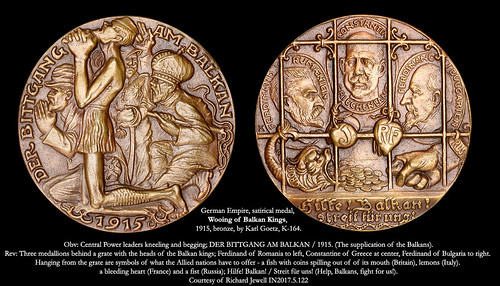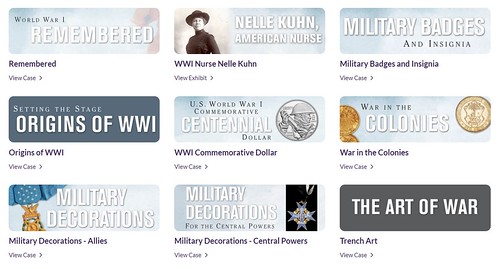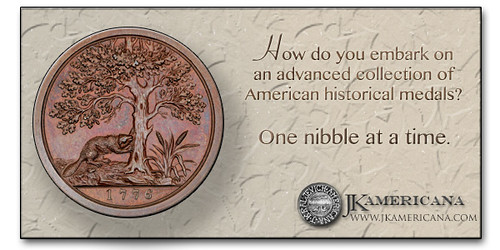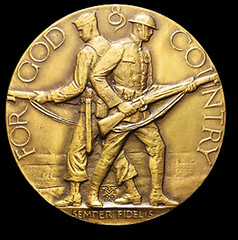
PREV ARTICLE
NEXT ARTICLE
FULL ISSUE
PREV FULL ISSUE
ANA WWI IN REMEMBRANCE VIRTUAL EXHIBITThe American Numismatic Association's Museum Director/Curator Douglas Mudd has also recently completed a new online exhibit. -Editor  Doug Mudd writes: The Edward C. Rochette Money Museum continues to expand its virtual presence - we have recently completed the virtual version of our Trenches To Treaties; World War I In Remembrance exhibit. There are two ways to view the exhibit - there is a virtual tour which can be accessed at: These pages will be available for the foreseeable future - well beyond the end of the physical exhibit - and they give you access to view close-up images of the individual objects in a way that is not possible in the real-world cases. Here's more information gleaned from the ANA's web site. -Editor Experience the ANA Money Museum's World War I Exhibit Online The Money Museum exhibit "Trenches to Treaties: World War I in Remembrance" is closing in three months. But if you haven't yet seen it, don't fret. The exhibit will live on forever online. The exhibit now permanently exists on the money.org website, where you can visit any of the displays in a 360-degree Virtual Tour. 
The initial combatants were Germany, Austria-Hungary and the Ottoman Empire as the Central Powers; and Montenegro, Serbia, Russia, France, Japan, Belgium and Great Britain as the Entente. The war grew to encompass nations from across the globe, with battlefields in Europe, Asia, Africa, the Pacific and most of the world’s seaways. Warfare was industrialized with horrific new weapons while propaganda campaigns ensured that civilians supported the war no matter what the cost. Eastern Europe was destabilized — the Habsburg and Russian Empires collapsed, and left civil war and anarchy in their wake. The new order in Eastern Europe was even more brutal and oppressive than the old. In Western Europe, Great Britain and France were weakened and Germany was crippled and resentful — setting the stage for World War II. The collapse of the Ottoman Empire resulted in the redrawing of the Middle Eastern map with consequences still relevant today. Economically, the war caused the collapse of the gold standard, which had done much to create the prewar era of international trade and economic expansion. Free trade was replaced by protectionism and international trade took over 80 years to recover as a percentage of global economic prosperity. The entry of the United States into World War I in April of 1917 on the side of the Entente was decisive. American industry and agriculture ensured that Great Britain and France could continue to fight in spite of German successes, and American manpower eventually overpowered the German armies on the Western Front. Meanwhile, the U.S. replaced Britain as the world’s banker, becoming the greatest financial power on earth. These were just a few of the consequences of the shots fired by a young Bosnian-Serb nationalist in Sarajevo on June 28, 1914. I'm pleased to see more and more online exhibits at numismatic museums everywhere. A great deal of effort goes into planning and creating every exhibit, but only so many people can see it in person before it closes. Exhibit catalogs and books are one good way to document an exhibit's contents, but even those are limited to the relatively small number of people who come into possession of a physical copy. Online exhibits are open to everyone across the world and are inexpensive to maintain. Go ahead and browse - it's a great exhibit. -Editor  To view the online exhibit, see:  Wayne Homren, Editor The Numismatic Bibliomania Society is a non-profit organization promoting numismatic literature. See our web site at coinbooks.org. To submit items for publication in The E-Sylum, write to the Editor at this address: whomren@gmail.com To subscribe go to: https://my.binhost.com/lists/listinfo/esylum All Rights Reserved. NBS Home Page Contact the NBS webmaster 
|
